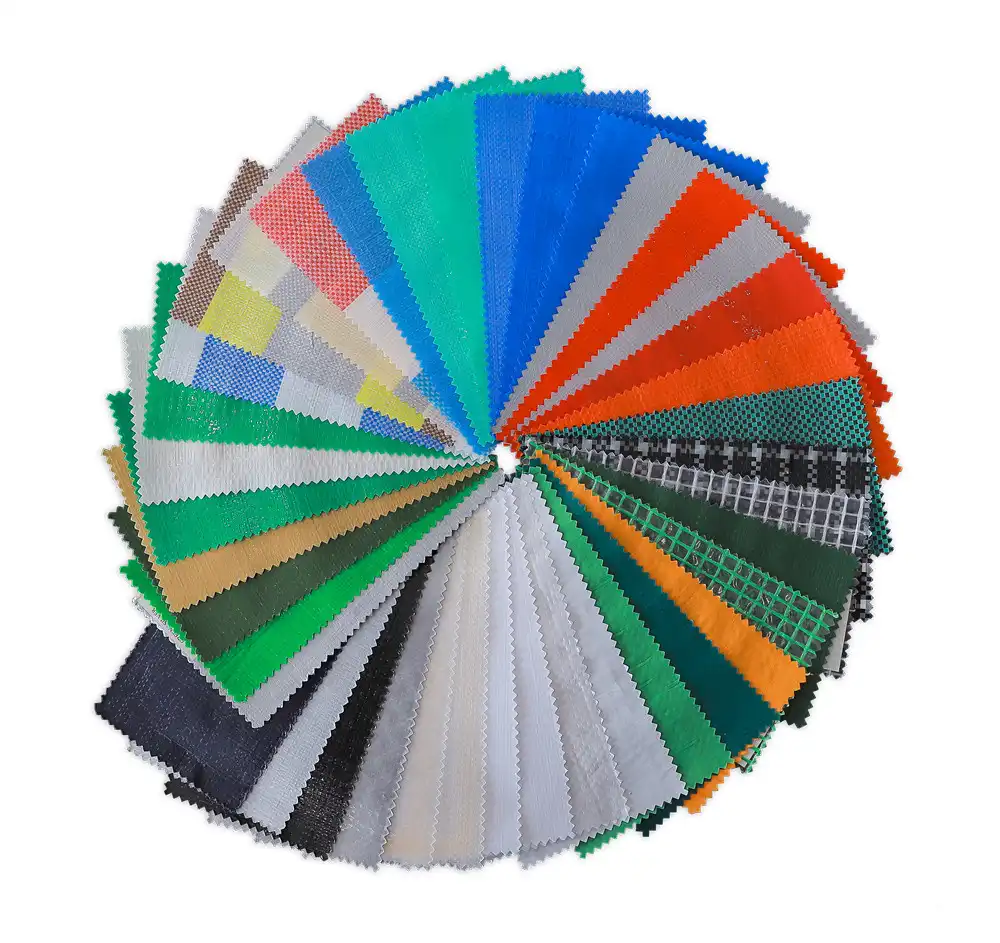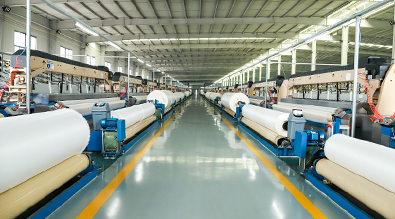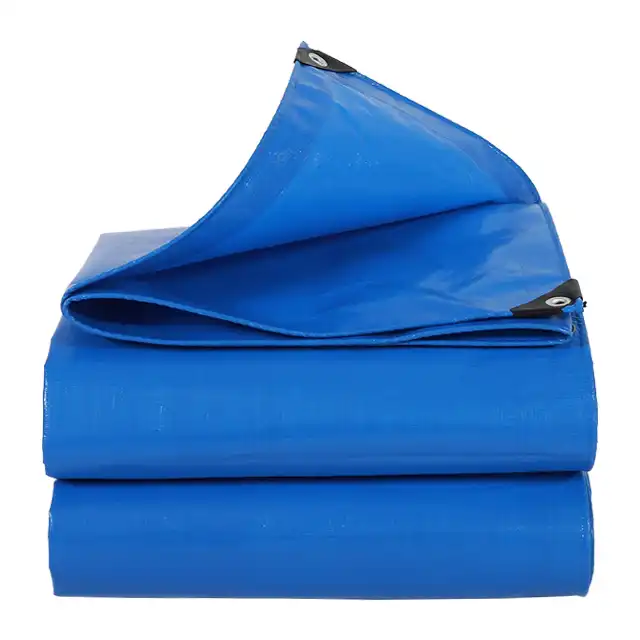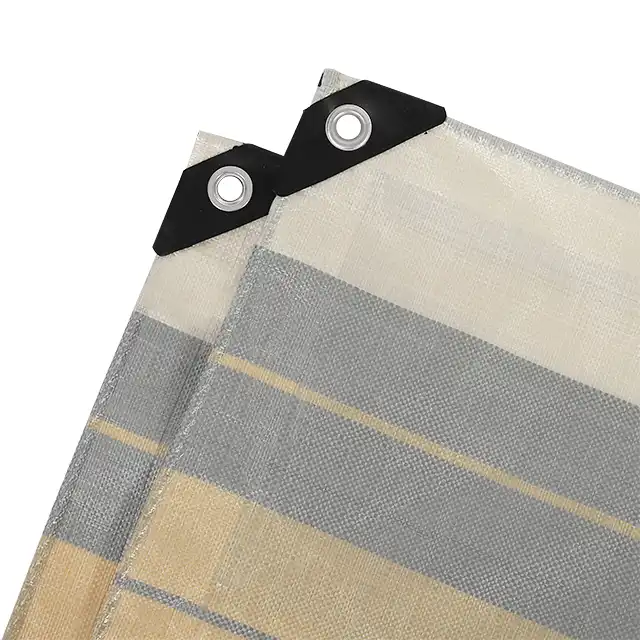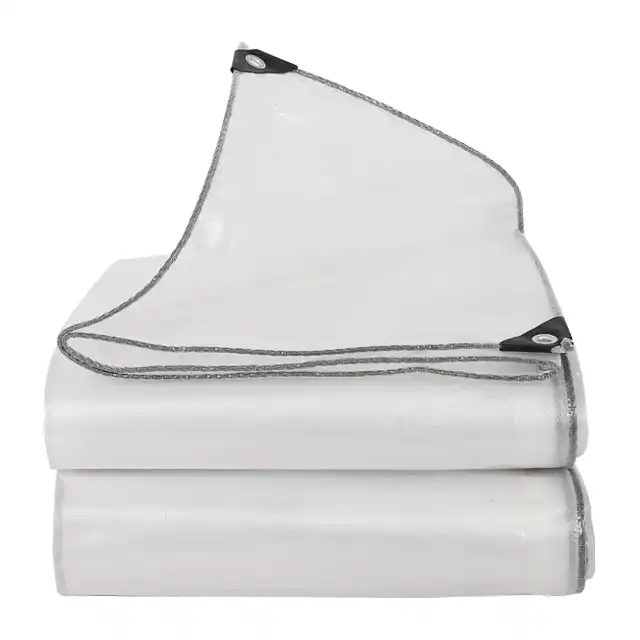Best Ways to Use a Fire-Resistant Tarp for Woodpiles
Protecting your woodpile from fire hazards while maintaining proper storage conditions is crucial for both safety and wood quality. The best ways to use a Fire-Resistant Tarpaulin for woodpiles involve strategic positioning at least 30 feet from structures, ensuring proper ventilation while maintaining complete coverage, selecting materials that meet NFPA 701 fire safety standards, securing edges tightly to prevent ember infiltration, and utilizing reinforced attachment points for long-term durability. This comprehensive approach combines fire prevention with effective moisture protection, creating an optimal storage environment that keeps your firewood dry, seasoned, and significantly less vulnerable to wildfire risks while extending the lifespan of your investment.
Strategic Placement and Fire Safety Considerations
Optimal Distance and Positioning Requirements
 When implementing a Fire-Resistant Tarpaulin system for woodpile protection, the fundamental principle revolves around creating adequate defensible space. Fire safety experts consistently recommend maintaining a minimum distance of 30 feet between covered woodpiles and any structures, including homes, garages, sheds, and other buildings. This strategic placement significantly reduces the risk of structure ignition during wildfire events, as radiant heat and flying embers have less opportunity to bridge the gap between your protected woodpile and vulnerable buildings. The Fire-Resistant Tarpaulin should be positioned to allow natural wind patterns to carry potential embers away from structures rather than toward them. Additionally, consider the topography of your property, as fire naturally travels uphill faster than downhill, making downhill positioning preferable when possible. The tarp coverage should extend beyond the woodpile dimensions by at least 12 inches on all sides to ensure complete protection while maintaining the recommended safety distances.
When implementing a Fire-Resistant Tarpaulin system for woodpile protection, the fundamental principle revolves around creating adequate defensible space. Fire safety experts consistently recommend maintaining a minimum distance of 30 feet between covered woodpiles and any structures, including homes, garages, sheds, and other buildings. This strategic placement significantly reduces the risk of structure ignition during wildfire events, as radiant heat and flying embers have less opportunity to bridge the gap between your protected woodpile and vulnerable buildings. The Fire-Resistant Tarpaulin should be positioned to allow natural wind patterns to carry potential embers away from structures rather than toward them. Additionally, consider the topography of your property, as fire naturally travels uphill faster than downhill, making downhill positioning preferable when possible. The tarp coverage should extend beyond the woodpile dimensions by at least 12 inches on all sides to ensure complete protection while maintaining the recommended safety distances.
Ground Preparation and Foundation Safety
Proper ground preparation beneath your Fire-Resistant Tarpaulin system forms the cornerstone of effective fire prevention and wood preservation. Begin by clearing all vegetation, dry grass, leaves, and combustible debris from an area extending at least 10 feet beyond the planned tarp coverage zone. Create a mineral soil base or use non-combustible materials such as gravel, concrete pavers, or metal pallets to elevate the woodpile off the ground. This elevation strategy serves dual purposes: preventing ground moisture from wicking into the wood and creating an air gap that reduces fire spread potential. The Fire-Resistant Tarpaulin should never make direct contact with the ground, as this can compromise both its fire-resistant properties and waterproofing capabilities. Install proper drainage around the perimeter to prevent water accumulation, which could create humidity issues under the tarp while also reducing the effectiveness of fire-resistant treatments. Consider installing a perimeter of decorative stones or gravel that serves as both a fire break and an aesthetic enhancement to your outdoor space.
Emergency Access and Evacuation Planning
Your Fire-Resistant Tarpaulin installation should accommodate emergency access requirements while maintaining optimal protection characteristics. Design the coverage system with quick-release mechanisms that allow for rapid woodpile access during emergency situations, such as the need to relocate fuel sources during approaching wildfires. Position the tarp attachment points to ensure that emergency personnel can quickly assess the woodpile condition without compromising their safety or spending excessive time on site. Create clear pathways around the covered woodpile that remain free of obstacles, tools, and other equipment that might impede emergency access. The Fire-Resistant Tarpaulin system should be clearly visible from multiple angles to aid in emergency assessment, utilizing reflective or high-visibility colors when appropriate. Document the location and characteristics of your protected woodpile in your family emergency plan, including specific details about the Fire-Resistant Tarpaulin type and any special considerations for emergency responders who might need to access the area during crisis situations.
Material Selection and Technical Specifications
Understanding Fire-Resistant Properties and Certifications
Selecting the appropriate Fire-Resistant Tarpaulin requires thorough understanding of industry standards and certification requirements that ensure genuine protective capabilities. The National Fire Protection Association's NFPA 701 standard represents the gold standard for fire-resistant fabric testing, evaluating how materials respond to flame exposure, heat transmission, and ember penetration. A quality Fire-Resistant Tarpaulin should demonstrate measurable flame retardancy, meaning it will not continue burning once the ignition source is removed, and it should resist ignition from small flame sources such as matches or small firebrands. Look for materials that have been treated with inherent fire-resistant chemicals rather than merely coated, as these treatments tend to be more durable and effective over extended periods. The base fabric composition plays a crucial role, with high-density polyethylene (HDPE) woven materials offering excellent fire resistance when properly treated, while maintaining essential waterproofing and UV resistance properties. Additionally, consider the thermal stability of the Fire-Resistant Tarpaulin, as materials that maintain their integrity at higher temperatures provide superior protection during extreme heat events.
Durability Features for Long-Term Performance
The longevity and effectiveness of your Fire-Resistant Tarpaulin investment depend heavily on construction quality and material specifications designed to withstand diverse environmental challenges. Premium Fire-Resistant Tarpaulin products feature reinforced edges with double-folded hems that prevent tearing and extend the material's lifespan significantly. The weave density, typically measured in denier ratings from 400D to 2500D, directly impacts both durability and protective performance, with higher denier ratings providing superior tear resistance and longevity. UV treatment levels between 1% and 7% ensure that your Fire-Resistant Tarpaulin maintains its color, flexibility, and protective properties despite constant sun exposure over multiple seasons. Quality eyelets or grommets should be constructed from corrosion-resistant materials such as aluminum or brass, spaced at optimal intervals of 50 to 100 centimeters to provide secure attachment points without creating stress concentration points that could lead to tearing. The coating thickness, measured in mils, affects both waterproofing and fire resistance, with thicker coatings generally providing superior protection but potentially reducing flexibility in extreme cold conditions.
Weight and Handling Considerations
The weight characteristics of your Fire-Resistant Tarpaulin significantly impact both installation ease and long-term performance, requiring careful balance between protection capability and practical usability. Lightweight options ranging from 85gsm to 100gsm offer excellent handling characteristics and are suitable for smaller woodpiles or seasonal applications where frequent removal and reinstallation may be necessary. Medium-weight Fire-Resistant Tarpaulin products in the 120gsm to 150gsm range provide enhanced durability and weather resistance, making them ideal for permanent installations covering substantial woodpile volumes. Heavy-duty options exceeding 180gsm deliver maximum protection and longevity but require more substantial support structures and may present challenges during installation or adjustment procedures. Consider the wind load characteristics of your installation site, as heavier Fire-Resistant Tarpaulin materials generally perform better in high-wind conditions but may require additional anchor points to prevent stress concentration. The flexibility of the material in various temperature conditions affects ease of handling, with quality materials maintaining workable flexibility even in sub-freezing conditions while retaining their fire-resistant properties.
Installation Methods and Best Practices
Secure Attachment Systems and Hardware Selection
Proper attachment methodology forms the critical foundation for Fire-Resistant Tarpaulin effectiveness, requiring systematic planning and quality hardware selection to ensure long-term performance. Begin by selecting attachment points that distribute load evenly across the tarp surface, utilizing the manufacturer's recommended grommet spacing while avoiding over-tensioning that could create stress concentration points leading to premature failure. Stainless steel or galvanized hardware resists corrosion and maintains holding power throughout diverse weather conditions, while adjustable tensioning systems allow for seasonal modifications as the Fire-Resistant Tarpaulin expands and contracts with temperature variations. Rope selection should prioritize UV resistance and strength characteristics, with synthetic materials such as polypropylene or polyester offering superior longevity compared to natural fiber options. Consider implementing a hybrid attachment system that combines permanent anchor points with seasonal adjustments, allowing the Fire-Resistant Tarpaulin to accommodate woodpile size variations while maintaining optimal protection characteristics throughout the storage period.
Ventilation Management and Moisture Control
Effective ventilation design represents a crucial balance between fire protection and wood preservation, requiring careful consideration of airflow patterns beneath your Fire-Resistant Tarpaulin system. Proper ventilation prevents moisture accumulation that could lead to wood rot, mold growth, or pest infestations while maintaining the protective benefits of your fire-resistant covering. Create strategic ventilation openings along the lower perimeter of the Fire-Resistant Tarpaulin installation, positioning these openings to promote cross-ventilation without creating pathways for ember infiltration. The ventilation system should facilitate natural convection currents that remove moisture-laden air while preventing rain, snow, and wind-blown debris from entering the storage area. Consider installing ventilation baffles or screens that maintain airflow while providing additional ember protection, particularly in high-risk fire zones where flying embers present ongoing threats. Monitor the humidity levels beneath your Fire-Resistant Tarpaulin periodically, adjusting ventilation configurations as needed to maintain optimal wood seasoning conditions while preserving fire protection effectiveness.
Seasonal Maintenance and Inspection Protocols
Regular maintenance protocols ensure that your Fire-Resistant Tarpaulin system continues providing optimal protection throughout its service life, while early identification of potential issues prevents costly failures during critical fire season periods. Establish a quarterly inspection schedule that includes comprehensive examination of all attachment points, checking for loosened hardware, frayed ropes, or damaged grommets that could compromise system integrity. Clean the Fire-Resistant Tarpaulin surface regularly using mild soap and water to remove accumulated debris, tree sap, or other contaminants that might affect its fire-resistant properties or create additional fire hazards. Inspect the material surface for signs of UV degradation, including color fading, brittleness, or surface cracking that might indicate the need for replacement or treatment renewal. Document any repairs or modifications to maintain a comprehensive service history that aids in warranty claims and helps predict replacement timing. Winter preparation should include snow load assessment and adjustment of tensioning systems to accommodate additional weight, while spring maintenance focuses on cleaning, drying, and checking for any damage that occurred during harsh weather periods. Store any removed Fire-Resistant Tarpaulin sections in clean, dry conditions to prevent degradation during off-season periods.
Conclusion
Implementing a comprehensive Fire-Resistant Tarpaulin system for woodpile protection requires careful attention to placement, material selection, and installation best practices that prioritize both fire safety and wood preservation. The strategic combination of proper positioning, quality materials meeting NFPA 701 standards, and systematic maintenance protocols creates an effective defense against wildfire threats while maintaining optimal storage conditions. Through thoughtful planning and professional-grade materials, property owners can significantly reduce fire risks while extending the usable life of their firewood investments.
When selecting your Fire-Resistant Tarpaulin solution, partnering with established manufacturers ensures access to proven technology and reliable performance. Linyi Shengde Plastic Co., Ltd. stands as a leading China Fire-Resistant Tarpaulin factory with over 20 years of manufacturing excellence, offering comprehensive solutions from their state-of-the-art facility equipped with advanced production lines and quality control systems. As a trusted China Fire-Resistant Tarpaulin supplier, they maintain partnerships with international organizations including UNHCR, IOM, ICRC, and UNICEF, demonstrating their commitment to quality and reliability. Their role as a premier China Fire-Resistant Tarpaulin manufacturer encompasses custom sizing, specialized treatments, and competitive China Fire-Resistant Tarpaulin wholesale pricing for volume requirements. Whether you need Fire-Resistant Tarpaulin for sale for residential applications or commercial-scale projects, their extensive product line offers competitive Fire-Resistant Tarpaulin price options without compromising quality standards. Experience the difference that High Quality Fire-Resistant Tarpaulin makes in protecting your valuable wood resources while maintaining the highest safety standards. Contact their expert team at info@shengdetarp.com to discuss your specific requirements and discover why professionals worldwide trust their fire-resistant solutions.
References
1. Fire-Safe Landscaping and Building Design Guidelines - National Fire Protection Association (NFPA), Fire Safety Research Institute
2. Wildfire Protection Standards for Structures and Fuels Management - International Code Council, Building Safety Research Department
3. Fire-Resistant Materials Testing and Certification Protocols - American Society for Testing and Materials (ASTM), Fire Safety Standards Committee
4. Wood Storage and Fire Prevention Best Practices Manual - U.S. Forest Service, Fire Prevention and Education Division
